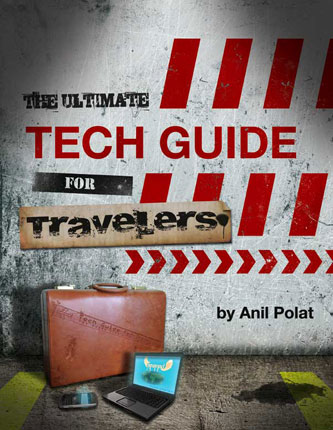As I prepared to move on to Thailand, my brain started clicking through checklists. Still possible to get a 30-day visa on arrival? Check. iPhone unlocked and ready for a foreign SIM cards for cheap overseas calls? Check. Adapter that would allow me to charge my electronics in Thailand? Um, no. These days, it’s not the security checkpoints or bad airline food that causes stress, it’s staying on top of the technology needed to work overseas.

There is a great deal of confusion surrounding the use of personal electronic equipment in foreign countries. With the exception of large appliances like washing machines, in the U.S. electrical receptacles (plugs) are wired for 120V; most other countries in the world, however, run on 220-240V, so to use electronic goods manufactured in the U.S. overseas, the first necessity is a converter that steps down the current. Additionally, every country has adopted a different design for its receptacles (plugs), so an adapter is necessary to make U.S. style flat pin plugs compatible with two-hole round pin plugs used in Asia, for example.
Fortunately, this whole issue has been simplified for me. The only equipment I need to charge is my Macbook Pro laptop, iPhone, and Canon camera battery, and all three have built-in converters. Figuring out which adapters I need is also a breeze these days, courtesy of Wikipedia, which has a comprehensive article on the subject, complete with photos of all the different types of plugs.
However, the question of charging electrical equipment is just the tip of the iceberg, technologically speaking, when traveling. What’s the best international calling program? How do you protect your private passwords when using an Internet cafe? What’s the best way to handle finances and currency exchange when traveling? How do you back up your valuable photos so you don’t risk losing them in the event of equipment failure or theft? If I researched all these questions I’d never have time to travel.
Fortunately, I don’t have to. My friend, Anil Polat, who is owner and editor of the popular Foxnomad Travel Tech blog, recently wrote a book about this subject, The Ultimate Tech Guide For Travelers. Polat is eminently qualified to author this manual, as he was a full-time computer security consultant making and breaking systems for some of the biggest companies in the world prior to becoming a digital nomad like me. He guarantees that travelers who purchase his book will:
- Save a minimum of $100 in the next year in gadget purchases.
- Never have to pay for software again.
- Learn how to keep your data safe and backed up, in multiple locations, without lifting a finger after the initial setup.
- Find ways to save up to 50% on common computer purchases.
- Learn the secret hacking tips you need to become a digital ninja.
And if that isn’t enough, Polat will provide a full six months of one-on-one technical support for anything you read in the book. I’ve read The Ultimate Tech Guide For Travelers and used numerous of the technology and travel tips that have saved me time and money; it is well worth the $37 price tag and I encourage anyone who travels to invest in this valuable manual. It’s available as a PDF file, as well in electronic form for the Kindle and Nook.

Hi there, yup this piece of writing is really fastidious and I have learned lot of things from it about blogging. thanks.
Not only are you being able to enjoy your mp3 player in the car, listening to whatever you want to listen to, you are getting full advantage of this product by also charging your mp3 player. So, now when you leave your car and you want to take your mp3 player with you, you no longer have to worry about your mp3 player being uncharged for wherever you are going…
Hi Barbara,
Can you tell me how much you paid for the adapter to convert from 220 to 110 in Thailand ?
I will need one for my iphone and camera.
Thank you,
Simpleman
Hi Simpleman: you’re making the common mistake of confusing a converter with an adapter. A converter will change 220 to 110. Most likely you don’t need this, as most electronic equipment these days has built-in converters that are rated from 110 to 240 volts and 50-60 hertz. If so, it can be used with all power sources, including Thailand. For example, your iPhone needs no converter- look at the fine print on the side of the plug and you will see it is rated as stated above. Most likely the charger for your camera will say the same thing. What you WILL need is an adapter. That’s just a simple plug that will make your two or three prong U.S. Plug fit into the Thai plugs, which are shaped differently. You can pick one up in Thailand for a couple of dollars at the most.
An absolute steal for $37!
Barbara – I’m glad you shared the fact that you don’t need converters on some electrical equipment. I have never carried a converter…ever. You just have to read the fine print on the charger and you can determine if it converts or not!
Hope you are enjoying Thailand!
True. Different adaptators for different countries are laaaaaammeeee!
Nice cover image.
Good travels!